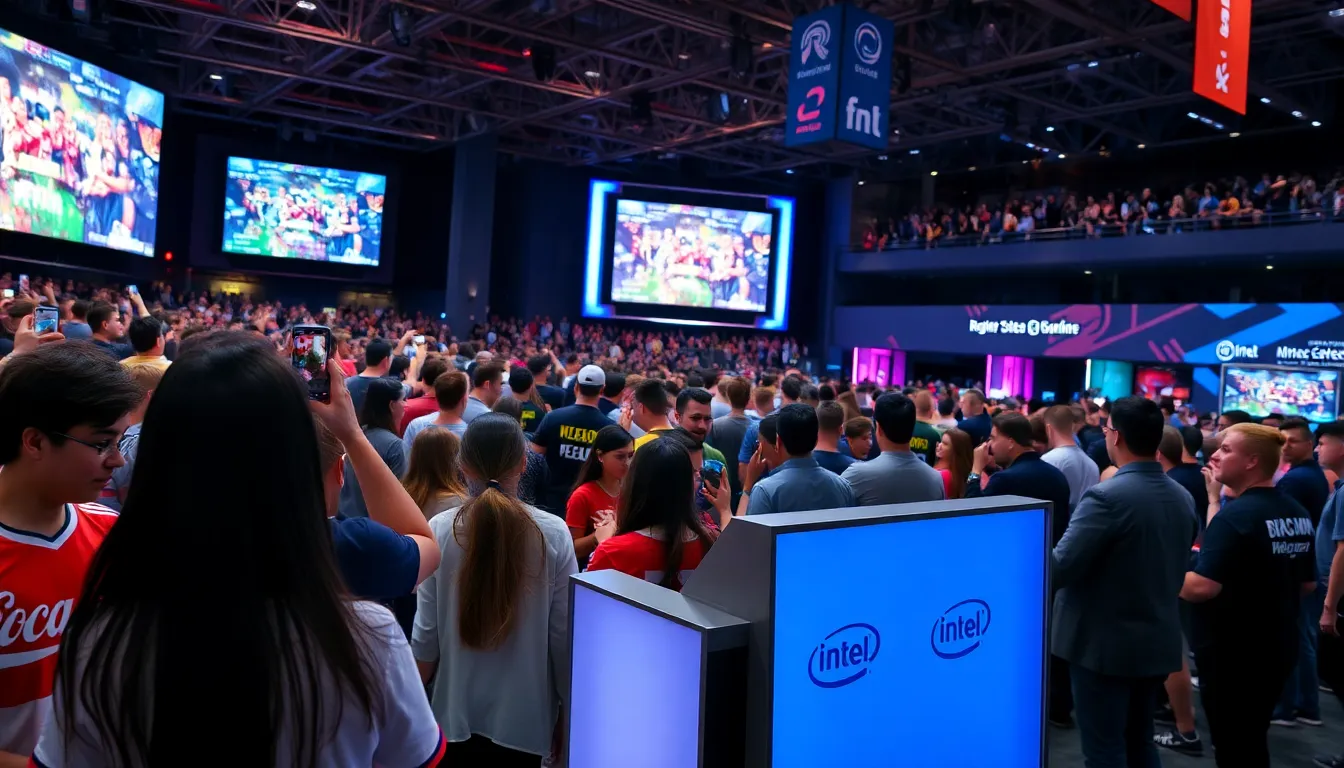Esports might just be the coolest club you’ve never been to. Imagine millions of fans cheering, competitive players battling it out in virtual arenas, and brands throwing money at it like it’s going out of style. Sounds intriguing, right? In recent years, the esports business has exploded, turning into a multi-billion-dollar industry that combines the thrill of gaming with savvy business tactics. Ready to jump into a digital world where gaming meets entrepreneurship? Let’s explore the fascinating dynamics of the esports business.
esports business

Over the last decade, the esports scene has made waves like a pro player scoring a game-winning goal. The industry is projected to surpass $1.5 billion by 2023, according to Newzoo. This growth is thanks to an explosion in viewer engagement, with major tournaments attracting millions of spectators online and offline. It’s not just kids in their parents’ basements anymore: sponsors from Coca-Cola to Intel recognize the potential to tap into a lucrative audience.
Also, platforms like Twitch and YouTube Gaming have revolutionized how audiences consume content. Viewers don’t merely watch players: they engage, follow, and even subscribe to their favorites. This new form of entertainment has opened the doors for countless opportunities in terms of merchandising, ticket sales, and exclusive content. As the audience diversifies and grows, so does the revenue stream, proving that esports is here to stay.
Key Components of the Esports Ecosystem
The esports ecosystem is like a well-oiled machine, with various parts working seamlessly together. One might think of it as a game of League of Legends, where each player has a unique role to play. At its core, there are the players, talented individuals who train rigorously to sharpen their skills. These gamers compete in various titles, from Dota 2 to Fortnite, drawing fans and sponsorships.
Another essential aspect is the tournament organizers such as ESL and DreamHack, who orchestrate the events that fans adore. Then you have the broadcast platforms, vital for streaming these competitions live to audiences worldwide. They amplify the reach and excitement, creating a community around each match. Not to forget the crucial role of fans, not just passive viewers, but active participants who contribute to the community through chats, forums, and social media.
Each component impacts the ecosystem’s growth and sustainability, highlighting how interconnected the esports world truly is.
Monetization Strategies in Esports
The money flowing into the esports scene is as impressive as some championship prize pools. Teams, organizers, and platforms have implemented creative monetization strategies to capitalize on this growing market. In-game purchases are one major avenue, with players spending millions on skins and season passes. Ads and sponsorships constitute another significant slice of the revenue pie.
Merchandising is also an effective way to generate income. Fan gear, from jerseys to collectible items, can bring in hefty profits, especially when a team is performing well. Value in popular team brands often transcends the games themselves. Also, pay-per-view events and premium subscriptions on platforms provide another layer for revenue generation.
There’s no denying that esports monetization is evolving faster than the latest game updates, with new technologies and trends constantly reshaping how profits are made.
Sponsorship and Branding in Esports
When it comes to sponsorships in the esports business, it’s a win-win scenario for brands and teams. Major companies are eager to partner with esports franchises, building brand awareness among young, tech-savvy audiences. Consider Red Bull or Nissan, which have embraced this trend wholeheartedly, putting their logos on player jerseys and sponsoring events.
Not surprisingly, successful branding strategies rely on authenticity. If a brand aligns itself properly with a team or event, the messaging resonates better, making sponsorships feel genuine rather than forced.
Esports also allows brands to use social media for engaging with potential customers. Platforms like Twitter and Instagram become vital, offering interactive campaigns that make fans feel like part of something bigger. As brands continue to recognize the potential of esports, it becomes evident that connection and community are at the heart of building a successful sponsorship.
Challenges Facing the Esports Industry
Although the esports industry is booming, it’s not without its hurdles. One significant challenge is maintaining player health. The demands of continuous play, streaming, and competition can lead to burnout. Organizations must prioritize mental and physical wellness to sustain performance over the long term.
Another issue involves the chaotic landscape of regulations. As esports grows, the need for standardized rules about player contracts, gambling, and fair play becomes more pressing. Fragmentation remains a problem, complicating relationships between competing leagues and sponsors.
Also, issues like inclusivity and diversity persist. While progress is being made, the industry must continue fostering a welcoming environment for players and fans from various backgrounds. Dealing with these challenges will determine the sustainability and credibility of esports in the future.
Future Trends in the Esports Business
Peering into the crystal ball of esports, numerous exciting trends emerge. One of the most significant is the expansion of mobile gaming. Titles like PUBG Mobile and Clash Royale have already captured massive audiences and are likely to drive esports growth in new demographics.
Virtual reality (VR) is also set to change the game, offering immersive experiences that may soon become a significant part of competitive play. Imagine watching your favorite player from the inside of the arena. How cool would that be?
Also, collaborations between traditional sports leagues and esports organizations may widen the appeal further, increasing investment from both sectors. As online viewership continues to climb, fans could expect new ways to interact, such as using augmented reality (AR) features during events, enhancing user experiences and engagement.

